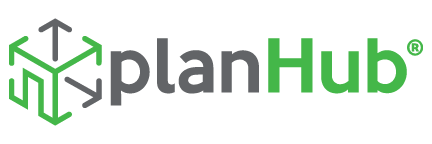Welcome, digital enthusiasts, to another tech-laden post on our blog! Today, we’re diving into the world of programmatic advertising. We know, it sounds like something out of The Matrix, but stick with us – this is about to get interesting.

What’s the Deal with Programmatic Advertising?
First things first, let’s establish what programmatic advertising is for those who might be slightly behind the tech curve. Essentially, it’s the automated buying and selling of online advertising. This cutting-edge technology revolutionizes the ad purchasing process, making it more efficient and less time-consuming. Forget haggling over prices and tedious negotiations – the machines have taken over. And frankly, we’re glad!
But let’s move on to why you’re here – the future of programmatic advertising. In the following sections, we’ll explore some trends and transformations you can expect. So, fasten your seatbelts, folks, we’re about to venture into the future.
Machine Learning and AI Are Stepping Up Their Game
Artificial Intelligence and machine learning are already playing a significant role in programmatic advertising. The ability of algorithms to analyze big data and make informed predictions is unparalleled. As the technology evolves, expect more accurate targeting, improved ROI, and fewer instances of ChatGPT invading your website (not that we’ve had any complaints so far ).
Say Hello to More Privacy Regulations
Remember the GDPR? Well, it was just the beginning. More stringent data privacy regulations are on the horizon, which means advertisers will have to be more careful than ever. Adapting to these new regulations can be challenging, but it’s essential for preserving consumer trust and avoiding hefty fines.
First-Party Data is King
As cookies crumble and privacy rules tighten, first-party data is becoming the new gold standard in digital advertising. For those scratching their heads, first-party data is the information you collect directly from your audience. It’s all about understanding the importance of 1st party data in B2B and how to collect and use it effectively.
The Rise of CTV and OTT Advertising
Cord-cutting has been on the rise, and with it, Connected TV (CTV) and Over-The-Top (OTT) devices have become more prevalent. As viewers flock to these platforms, advertisers aren’t far behind. Programmatic advertising is paving the way for personalized ads on these platforms, creating unique opportunities for brands.

Omni-Channel Will Be the Norm, Not the Exception
With the proliferation of devices and platforms, omni-channel marketing is becoming more crucial. It’s all about providing a seamless experience across all touchpoints. Sounds like a tall order, but with programmatic advertising, it’s completely doable. (We’re looking at you, omnichannel marketing fanatics!)
The Advent of Programmatic DOOH
Digital Out-Of-Home (DOOH) advertising – think digital billboards and screens in public spaces – is another area where programmatic is making its mark. The ability to change DOOH advertising in real-time based on data is a game-changer, offering more flexibility and effectiveness.
A More Transparent Advertising Ecosystem
Transparency issues have plagued the advertising industry for years, but programmatic advertising offers a solution. Blockchain technology, in particular, holds great promise for bringing transparency and combating ad fraud.
Let’s Wrap Up
So, what’s the takeaway here? Change is the only constant in the realm of programmatic advertising. As we march forward, AI, machine learning, privacy regulations, and new technologies will shape this landscape. As marketers, staying ahead of the curve is paramount, and that’s where we come in!
Looking for more digital updates or want to deep dive into the world of data-driven strategies? Don’t hesitate to explore our other blog posts. And while you’re at it, why not subscribe to our newsletter? It’s like a cheat sheet for all things digital – delivered straight to your inbox.

Q: How does programmatic advertising work?
A: It uses AI to automate the buying and selling of online advertising, cutting out manual processes and making it more efficient.
Q: How is AI impacting programmatic advertising?
A: AI and machine learning help analyze large amounts of data, make informed predictions, and enhance targeting accuracy.
Q: What is first-party data, and why is it important?
A: First-party data is information collected directly from your audience. With tighter privacy regulations, it’s becoming the go-to source for targeting information.
Q: How is programmatic advertising becoming more transparent?
A: Emerging technologies like blockchain offer the promise of a more transparent advertising ecosystem, reducing ad fraud and increasing trust.
Don’t forget to visit d-dat.com for more quality and useful blog posts!







